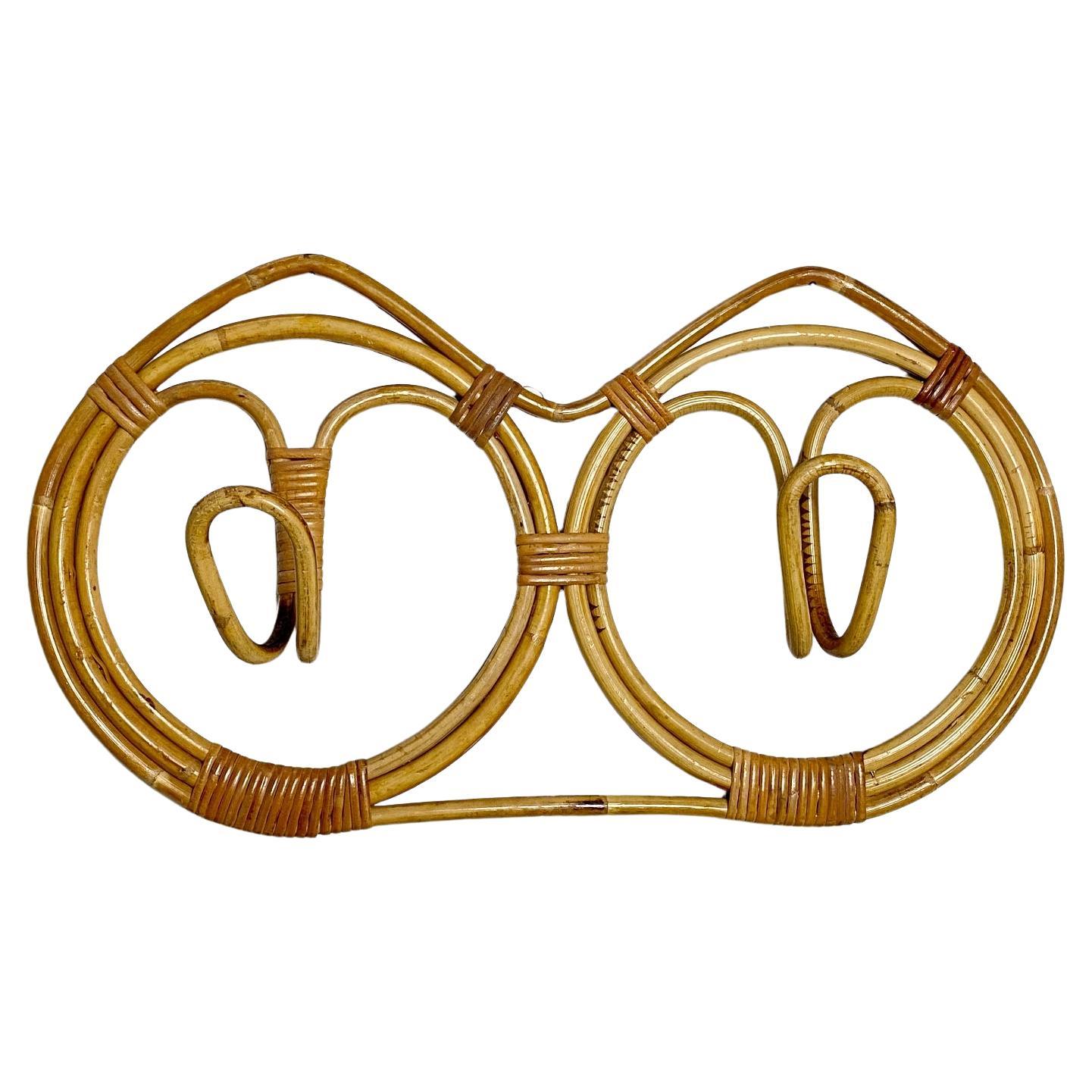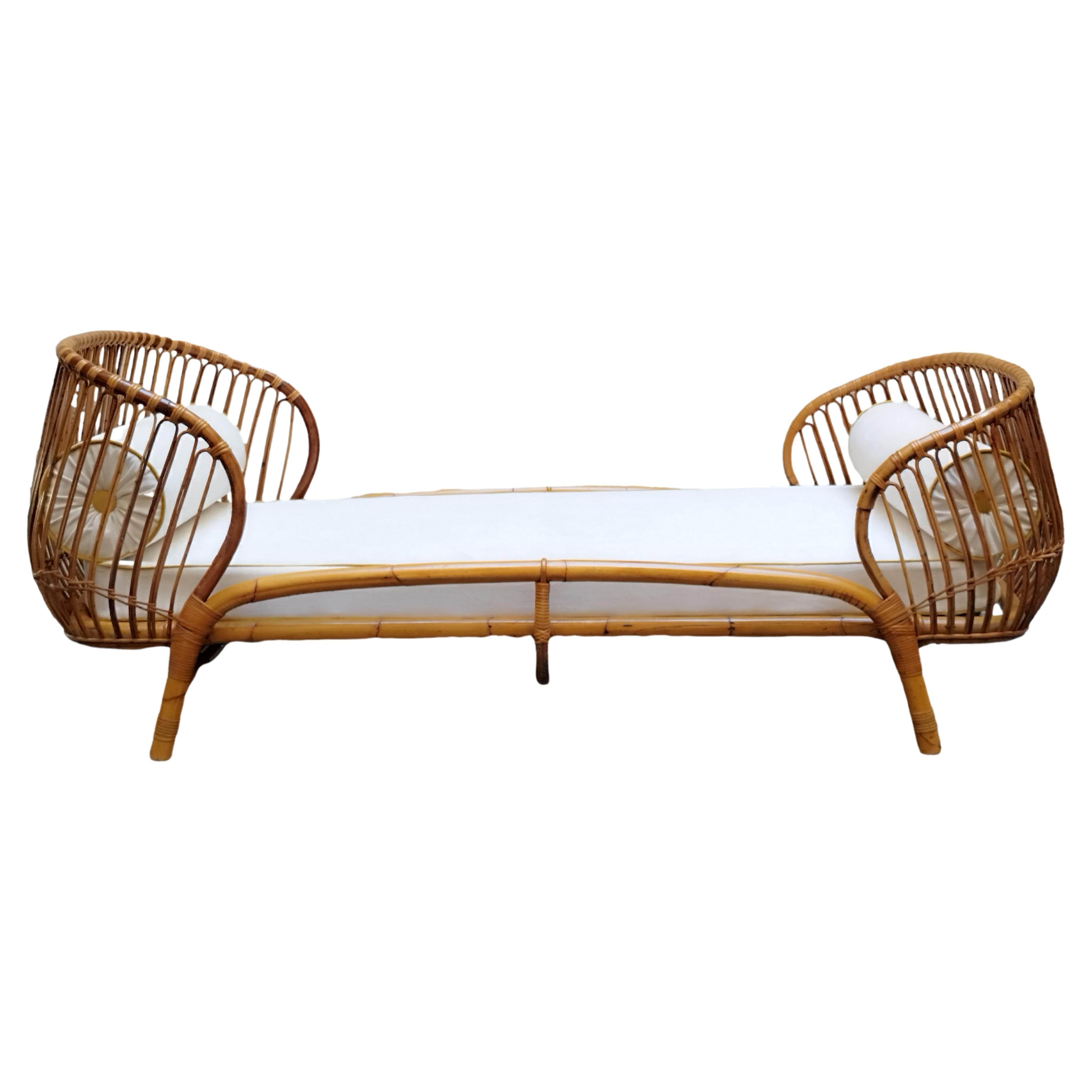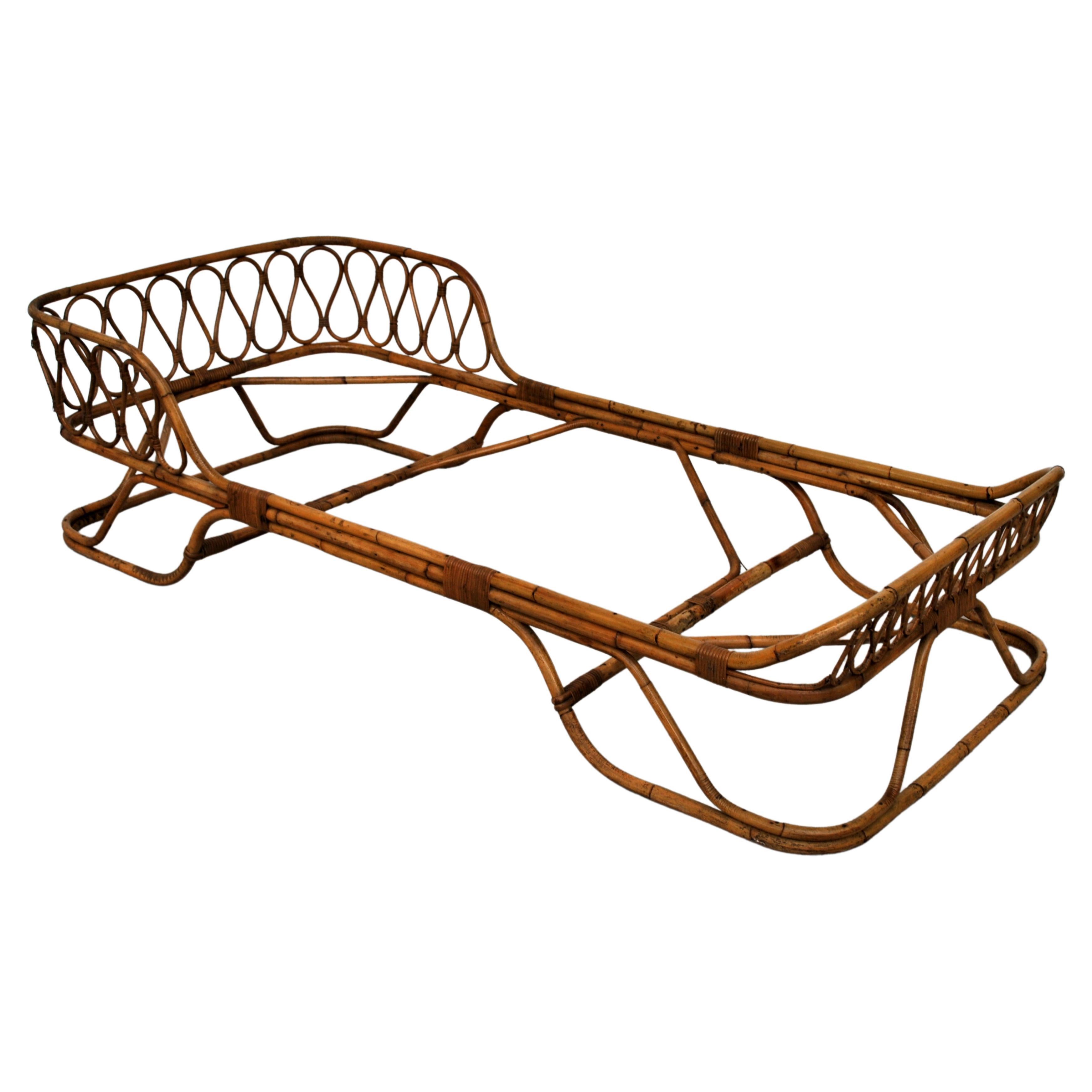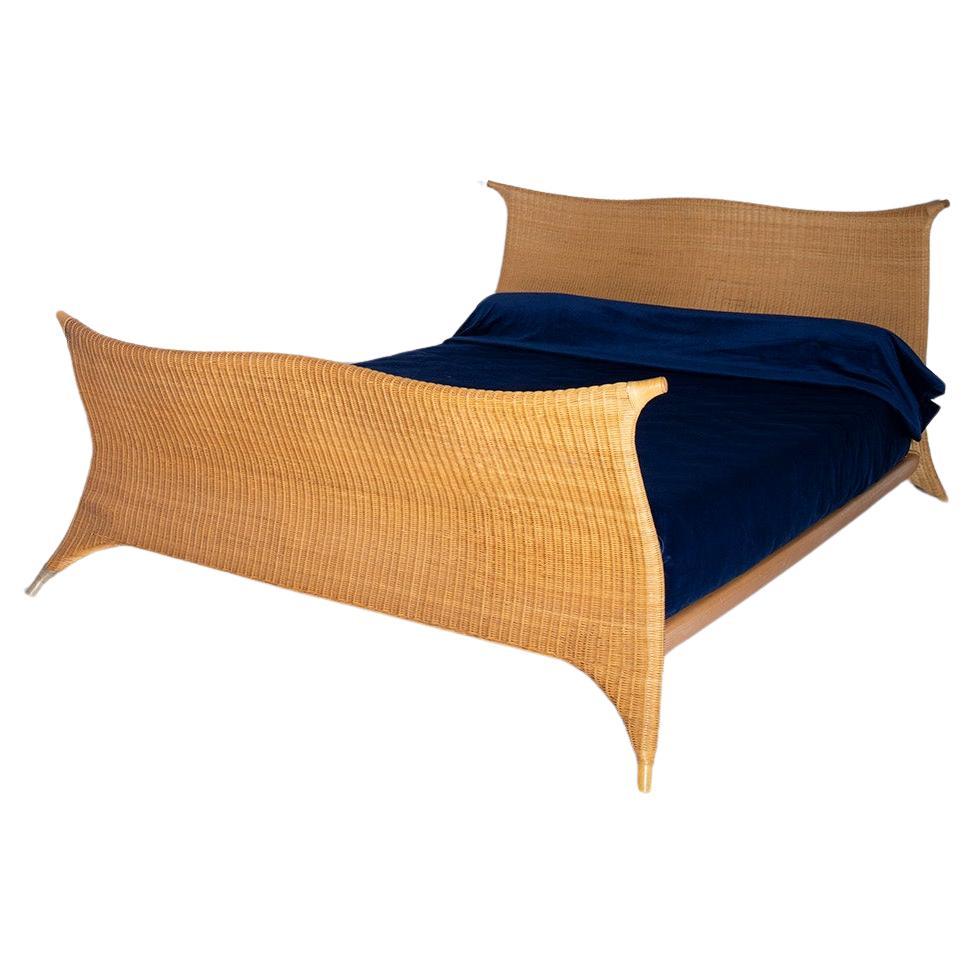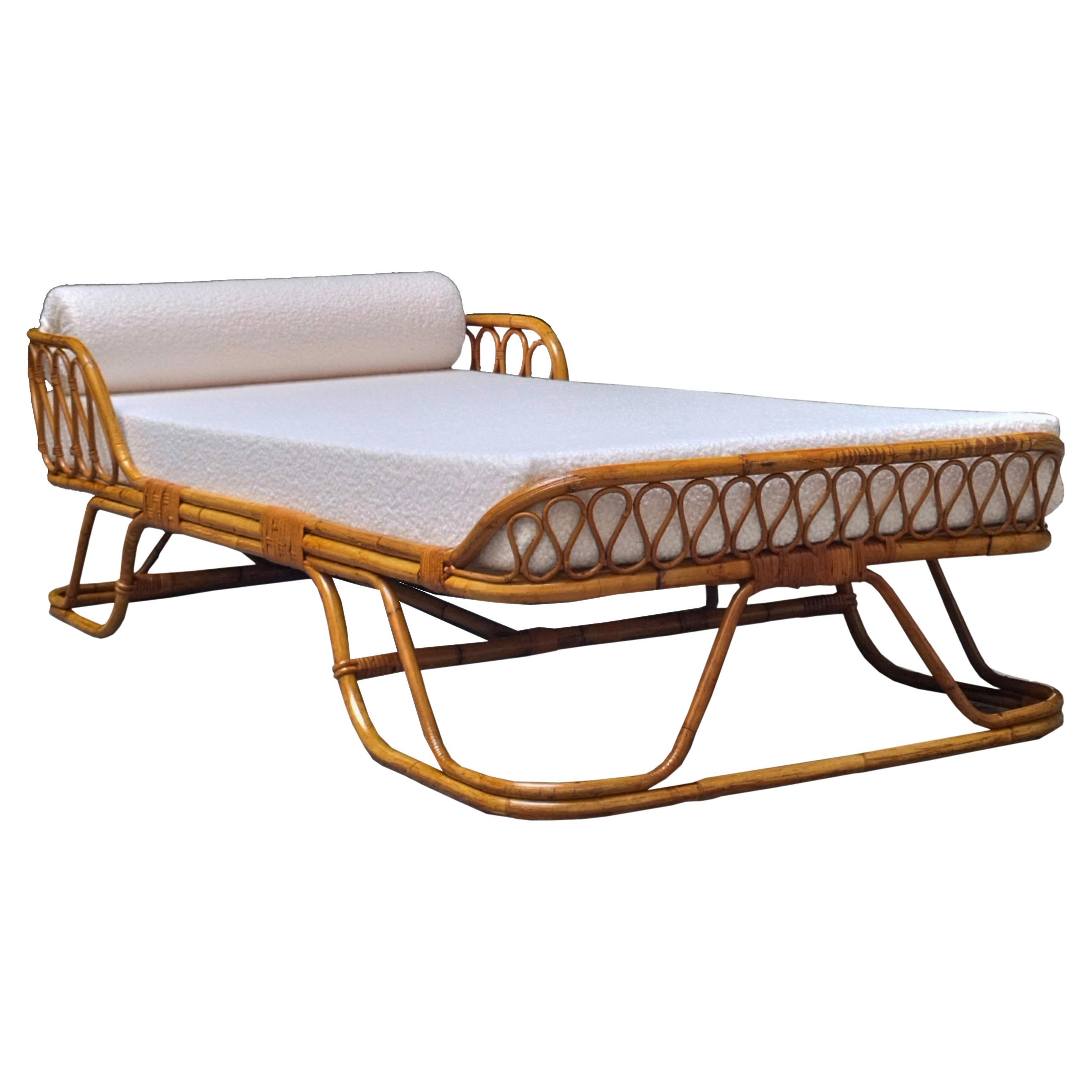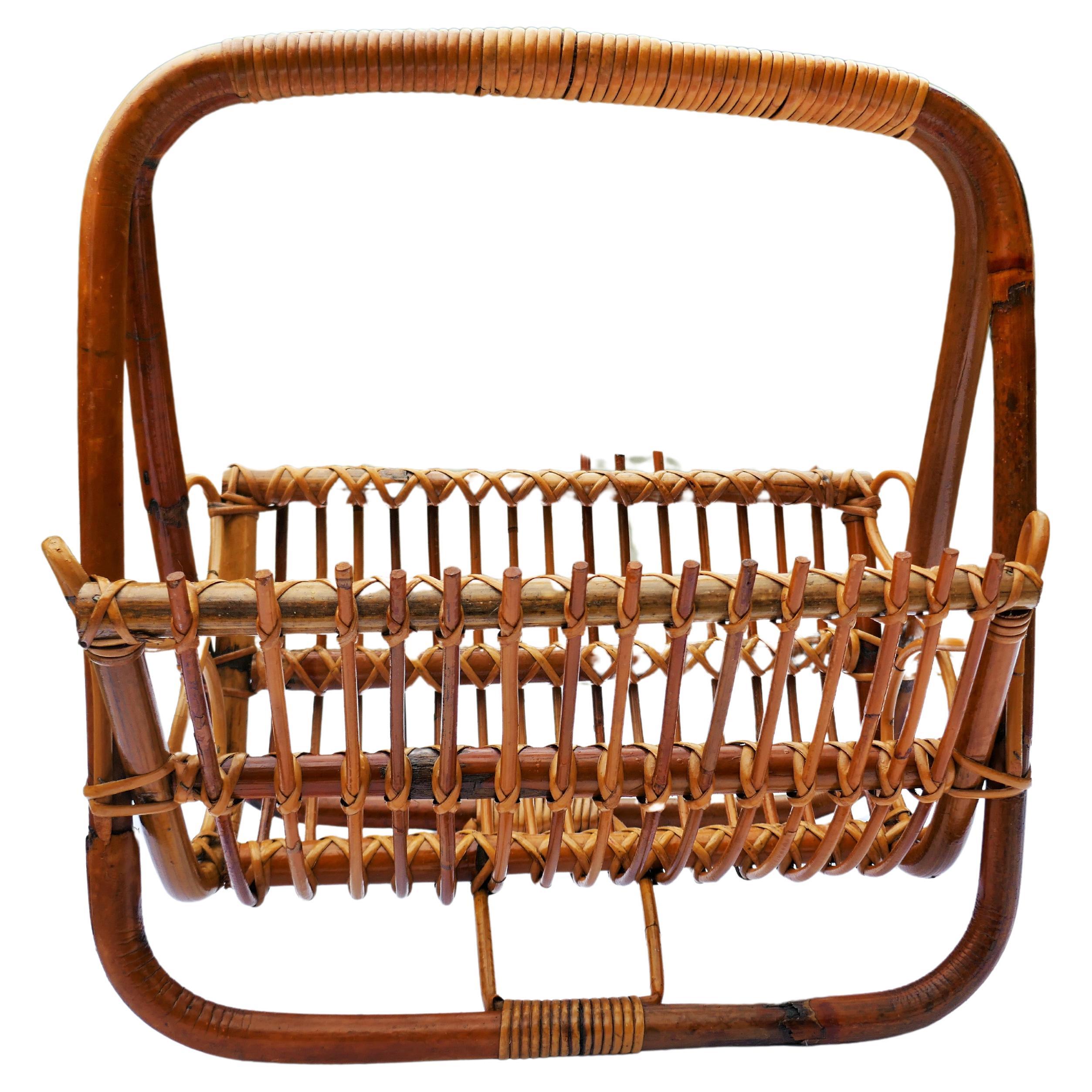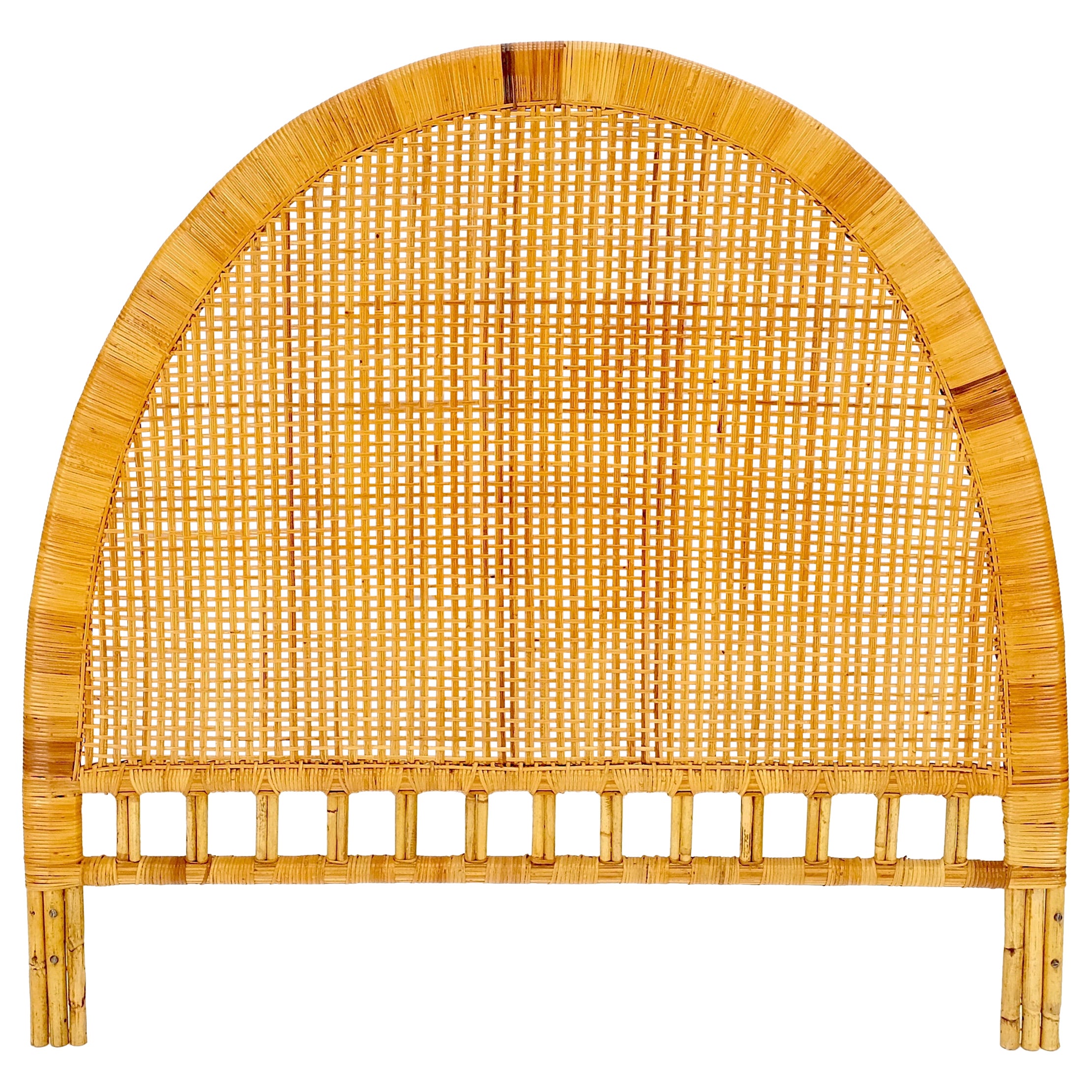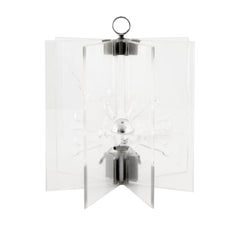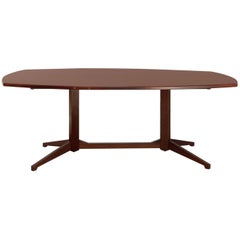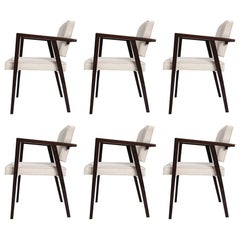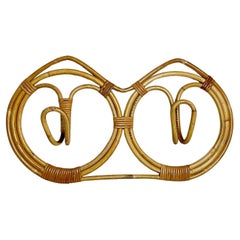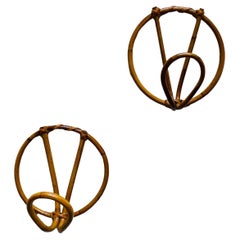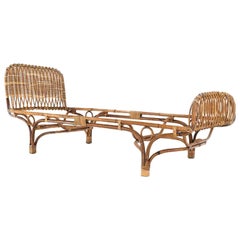
Franco Albini Italian Rattan and Rush Mid-Century Bed Model "677" by Bonacina
View Similar Items
Franco Albini Italian Rattan and Rush Mid-Century Bed Model "677" by Bonacina
About the Item
- Creator:
- Dimensions:Height: 35.44 in (90 cm)Width: 35.44 in (90 cm)Depth: 80.32 in (204 cm)
- Style:Mid-Century Modern (Of the Period)
- Materials and Techniques:
- Place of Origin:
- Period:
- Date of Manufacture:1959
- Condition:Wear consistent with age and use.
- Seller Location:Barcelona, ES
- Reference Number:1stDibs: LU237437594413
Franco Albini
While working under the polymath Gio Ponti — arguably the most important figure in 20th-century Italian modernism — furniture designer Franco Albini nurtured a love for modern forms combined with traditional craft techniques.
Albini is widely known for working with organic materials such as rattan and cane for his chairs and other seating, but he also played a pivotal role in the Italian rationalist movement of the early 20th century, which saw architects and furniture makers applying a strict emphasis on geometry in their work. Rationalists drew on Ancient Roman architecture but rejected ornament, much in the way that Le Corbusier and celebrated Bauhaus figures such as Ludwig Mies van der Rohe had in their modernist furniture.
Albini received his degree in architecture from the Polytechnic University of Milan in 1929, and, in 1931, he founded his practice in Milan, where he tackled workers’ housing and other reconstruction projects. A gifted urban planner, he also developed the Palazzo Bianco, Palazzo Rosso and Tesoro di San Lorenzo museums in Genoa. While Albini is revered for his Margherita chair — a Triennale Milano award winner created for Bonacina in 1951 — he also collaborated with manufacturers Poggi and Cassina in the 1940s on seating, tables and more that embodied his artistic vision. Of that mid-century work, the one piece that perhaps best captures this vision is the iconic Luisa chair.
With its cherry red upholstery and sinuous wooden legs that seem to float aboveground, the Luisa is a genuine masterpiece. It is also a testament to Albini’s perfectionism, as it endured several prototypes — including one made by Knoll in the late 1940s — and took approximately 15 years to design. Poggi launched the final version of the armchair in 1955, earning Albini the prestigious Compasso d’Oro from Italy’s Association for Industrial Design. It is produced today by Cassina. Albini named the chair for someone who likely saw the process firsthand: his personal secretary of two decades, Luisa Colombini.
Find vintage Franco Albini furniture on 1stDibs.
- Table lamp model “524" by Franco Albini, Italy, 1952By Franco AlbiniLocated in Barcelona, ESTable lamp model “524” Made in collaboration with Franca Helg Manufactured by Arteluce Italy, 1952 Openwork Perspex in a chrome frame Measurements 41 Ø cm x 47h cm. 16,14 Ø in x 18,5...Category
Vintage 1950s Italian Table Lamps
MaterialsChrome
- Franco Albini Mahogany mid-centry Italian Table Model TL-22 produced by PoggiBy Franco AlbiniLocated in Barcelona, ESFranco Albini & Franca Helg. Dining table model no. TL22. Manufactured by Poggi, Italy, 1958. Mahogany. Measurements: 180.3 cm x 104.1 cm x 73 H cm. 70.98 in x 40.98 in x 28.74 in. Literature: Giuliana Gramigna, Repertorio 1950/1980, Milan, 1985, p. 123. Franco Albini, was born in 1905 and died in 1977. He spent his childhood and part of his youth in Robbiate in Brianza, where he was born. Albini, as an adolescent moved with his family to Milan. Here he enrolled in the Faculty of Architecture of the Polytechnic and graduated in 1929. He started his professional activity in the studio of Gio Ponti and Emilio Lancia, with whom he collaborated for three years. At the 1929 International Exhibition in Barcelona (where Gio Ponti curated the Italian pavilion and Mies van der Rohe realized that of Germany) and in Paris where, as Franca Helg recounted, he had the opportunity to visit the studio by Le Corbusier. In those three years, the works he carried out are admittedly of the twentieth century imprint. It is the meeting with Edoardo Persico that marked a clear turning point towards rationalism and the approach to the group of editors of "Casabella". The partly ironic and partly very harsh comments of the Neapolitan critic to a series of drawings, made by Albini for the design of some office furniture, caused him a great disturbance. “I spent days of real anguish - Albini recalls - I had to answer all the questions. I also had a fever, a large and long fever. " The meted provoked Albini to openen a professional studio in via Panizza with Renato Camus and Giancarlo Palanti. The group of architects began to deal with public housing by participating in the competition for the Baracca district in San Siro in 1932 and then building the IFACP neighborhoods: Fabio Filzi (1936/38), Gabriele D'Annunzio and Ettore Ponti (1939). During this period, Albini also worked on his first villa (Pestarini), which Giuseppe Pagano, architect and critic of the time, presented as follows: “This coherence, which the superficial rhetoric of fashionable jugglers calls intransigence, and which is instead the basis of understood between the fantasy of art and the reality of the craft, in Franco Albini, it is so rooted that it transforms theory into a moral attitude ". But it is above all in the context of the exhibitions that the Milanese master experienced his compromise between that "rigor and poetic fantasy" of which Pagano speaks, coining the elements that became a recurring theme in his . The opening in 1933 of the new Triennale headquarters in Milan, in the Palazzo dell'Arte, was an important opportunity to express the strong innovative character of rationalist thinking, a gym in which to freely experiment with new materials and new solutions, but above all a "method". "Cultivated as a communication laboratory, the art of setting up was for the rationalists of the first generation what the perspective had been for the architects of humanism: the field open to a hypothesis of space that needed profound reflections before landing the concreteness of the construction site ". Together with Giancarlo Palanti, Albini on the occasion of the V Triennale di Milano set up the steel structure house (with R. Camus, G. Mazzoleni, G. Minoletti and with the coordination of G. Pagano), for which he also designed the 'furniture. At the following Triennale of 1936, Persico dided, together with a group of young designers gathered by Pagano in the previous edition of 1933, Franco Albini took care of the preparations of the home exhibition. The setting up of Stanza per un uomo, at that same Triennale, allows us to understand the acute and ironic approach of Albini, as a man and as a designer: "Celebrating the beauty of mechanics was the imperative to which, for example, the surprising displays by Franco Albini who managed, in the subtle way of a refined and rarefied style, to sublimate their practical content in the metaphysics of daring still lifes: flying objects which marked in the void refined frames and metal intricacies the nodes of a fantastic cartography where industry finally became art free from purpose ". That same year Albini and Romano designed the exhibition of the Ancient Italian Goldsmithery: vertical uprights, simple linear rods, designed the space. A theme, of the "flagpole", seemed to be the center of the evolution of production and the creative process. The concept is reworked over time, with the technique of decomposition and recomposition typical of Albinian design: in the preparation of the Scipione Exhibition and contemporary drawings (1941) the tapered flagpoles, on which the paintings and display cases were hung, are supported by a grid of steel cables; in the Vanzetti stand (1942) they take the V-shape; in the Olivetti shop in Paris (1956) the polished mahogany uprights support the shelves for the display of typewriters and calculators. The flagpole is found, however, also in other areas. In the apartments he designed, it is used as a pivot on which the paintings can be suspended and rotated to allow different points of view, but at the same time as an element capable of dividing the spaces. The Veliero bookcase...Category
Mid-20th Century Italian Mid-Century Modern Dining Room Tables
MaterialsMahogany
- Franco Albini Set of Six Midcentury Brazilian Dining Chairs jacaranda and fabricBy Franco Albini, Forma BrazilLocated in Barcelona, ESFranco Albini (1905-1977) Set of six dining chairs with arms (Price per chair) Manufactured by Forma Brazil Brazil, 1950s Solid jacaranda wood and fabric Measurements 58 cm x 55 c...Category
Mid-20th Century Brazilian Mid-Century Modern Dining Room Chairs
MaterialsUpholstery, Jacaranda
- Faye Toogood Roly Poly Nightstand/ Bed Side Table, Wood, London, 2019By Faye ToogoodLocated in Barcelona, ESFay Toogood Roly Poly nightstand/ bed side table Manufactured by Faye Toogood London, 2019 Engineered wood, soft touch lacquer Measurements 38,5 cm x 32 cm x 47.5 H cm 15 i...Category
21st Century and Contemporary English Night Stands
MaterialsWood
- Pair of 20th Century Swedish Headboards by Josef FrankBy Josef FrankLocated in Barcelona, ESA Pair of 20th Century Swedish Headboards by Josef Frank in 1939. Made for Firma Svenskt Tenn.Category
Vintage 1930s Swedish Scandinavian Modern Bed Coronas
MaterialsRattan, Mahogany
- Italian Mid-century Salmon coloured glass Mirror model "1669" by Max IngrandBy Max IngrandLocated in Barcelona, ESMax Ingrand Mirror model “1669” Manufactured by Fontana Arte Italy, 1950s Colored glass, mirrored glass. Measurements 71 Ø cm. 28 Ø in. Provenance Private collection, ...Category
Vintage 1950s Italian Wall Mirrors
MaterialsGlass, Mirror
- Franco Albini Bonacina Coat Rack, Rattan, Bamboo, 1950s, ItalyBy Franco Albini, BonacinaLocated in Biebergemund, HessenMid-Century Modern bamboo coat rack designed by Franco Albini from 1950s.Category
Mid-20th Century Italian Mid-Century Modern Coat Racks and Stands
MaterialsBamboo
- Franca Helg for Bonacina Rattan Daybed, Italy 1960sBy Franca Helg, BonacinaLocated in Naples, ITA splendid curved bamboo daybed designed by Franca Helg for Bonacina in the 1960s. The bed is made entirely of a bamboo frame, rattan and rush joints.Category
Vintage 1960s Italian Mid-Century Modern Beds and Bed Frames
MaterialsBamboo, Rattan
- Franco Albini for Bonacina Pair of Rattan and Bamboo Coat Rack, Italy 1960sBy Franco Albini, BonacinaLocated in Naples, ITPair of round rattan and bamboo coat hangers, single hook, Franco Albini for Bonacina. Made in Italy in the 1960s.Category
Vintage 1960s Italian Mid-Century Modern Coat Racks and Stands
MaterialsRattan
- Mid-Century Modern Italian Pair of Bamboo and Rattan Single Beds. 1960sBy Franca HelgLocated in Prato, ITMid-Century Modern Italian Pair of Bamboo and Rattan Single Beds with their original bed nets from 1970s The beds need a mattress cm.190x80 The beds have a wonderful patina due to ag...Category
Vintage 1960s Italian Mid-Century Modern Beds and Bed Frames
MaterialsBamboo, Rattan
- Mid-Century Modern Italian Pair of Bamboo and Rattan Day Beds by Franca HelgBy Franca HelgLocated in Prato, ITPair of stunning beds of daybeds in rattan and bamboo by Franca Helg already provided with bed net. 1970s Measures for mattress cm.80x190 The beds are in really good vintage conditio...Category
Vintage 1970s Italian Mid-Century Modern Beds and Bed Frames
MaterialsBamboo, Rattan
- Bamboo Bed by Tito Agnoli for Bonacina, Italy, 50'sBy Tito Agnoli, BonacinaLocated in Padova, ITBamboo bed by Tito Agnoli for Bonacina - Italy - 50's The simple but at the same time refined formal configuration of this bed enhances the warm naturalness of the bamboo and the modular core made up of load-bearing boards (those with larger diameters) and infill ones (with smaller diameters). Four sturdy feet raised the seat 45 cm from the ground. The architect and lighting and furniture designer Tito Agnoli was born in 1931 in Lima, Peru. Having a family in Italy, he moved there to study in the years after the Second World War. After studying painting under the guidance of the modernist artist Mario Sironi, Agnoli enrolled at the Polytechnic of Miano in 1949 to study architecture. After graduating and specializing in industrial design, Agnoli completes an apprenticeship for the famous designers Gio Ponti and Carlo De Carli. In the 50s, 60s and 70s Agnoli designed with aptitude in the fields of furniture and lighting, creating seating designs for Italian luxury brands such as Arflex, Bonacina, Matteo Grassi, Poltrona Frau, Ycami, and design of lamps and chandeliers for Oluce. His notable designs include the Model 9000 sofa (1969) for Arflex; the sculptural wicker chair...Category
Vintage 1950s Italian Mid-Century Modern Beds and Bed Frames
MaterialsBamboo
